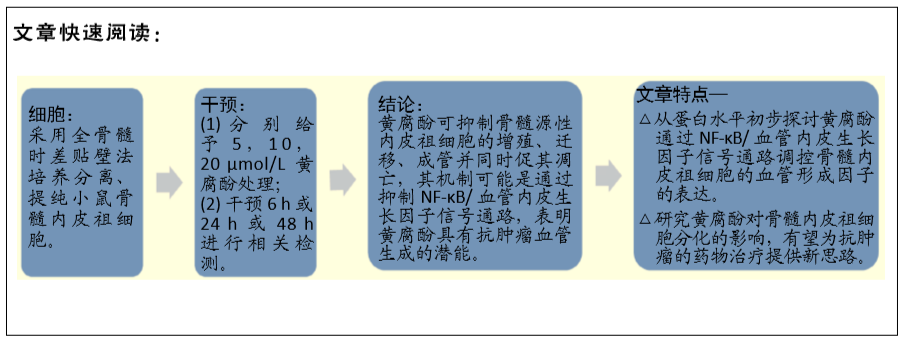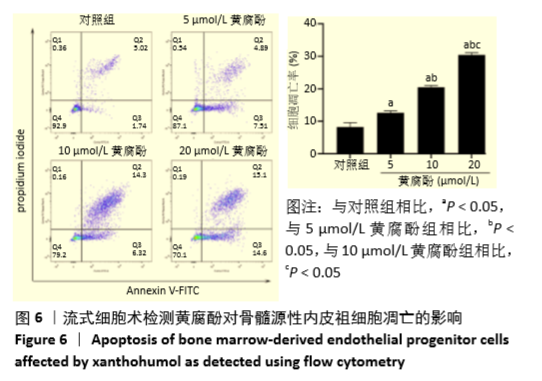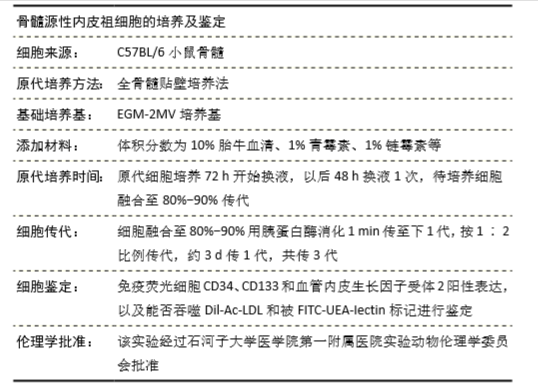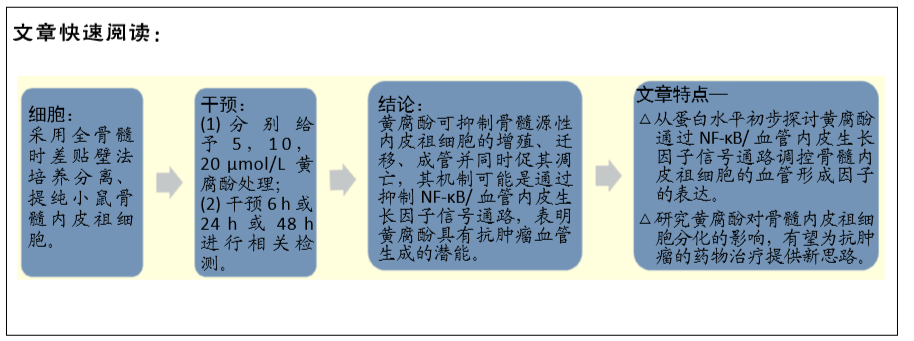[1] 郑荣寿,孙可欣,张思维,等.2015年中国恶性肿瘤流行情况分析[J].中华肿瘤杂志,2019,41(1):19-28.
[2] FOLKMAN J. Seminars in Medicine of the Beth Israel Hospital, Boston. Clinical applications of research on angiogenesis. N Engl J Med. 1995; 333(26):1757-1763.
[3] TEPPER OM, CAPLA JM, GALIANO RD, et al. Adult vasculogenesis occurs through in situ recruitment, proliferation, and tubulization of circulating bone marrow-derived cells. Blood. 2005;105(3):1068-1077.
[4] FOLKINS C, SHAKED Y, MAN S, et al. Glioma tumor stem-like cells promote tumor angiogenesis and vasculogenesis via vascular endothelial growth factor and stromal-derived factor 1. Cancer Res. 2009;69(18):7243-7251.
[5] CHEN X, FANG J, WANG S, et al. A new mosaic pattern in glioma vascularization: exogenous endothelial progenitor cells integrating into the vessels containing tumor-derived endothelial cells. Oncotarget. 2014;5(7):1955-1968.
[6] RUSSELL JS, BROWN JM. Circulating mouse Flk1+/c-Kit+/CD45- cells function as endothelial progenitors cells (EPCs) and stimulate the growth of human tumor xenografts. Mol Cancer. 2014;13:177.
[7] XIANG Y, GUO Z, ZHU P, et al. Traditional Chinese medicine as a cancer treatment: Modern perspectives of ancient but advanced science. Cancer Med. 2019;8(5):1958-1975.
[8] ZOU G, ZHANG X, WANG L, et al. Herb-sourced emodin inhibits angiogenesis of breast cancer by targeting VEGFA transcription. Theranostics. 2020;10(15):6839-6853.
[9] SŁAWIŃSKA-BRYCH A, ZDZISIŃSKA B, CZERWONKA A, et al. Xanthohumol exhibits anti-myeloma activity in vitro through inhibition of cell proliferation, induction of apoptosis via the ERK and JNK-dependent mechanism, and suppression of sIL-6R and VEGF production. Biochim Biophys Acta Gen Subj. 2019;1863(11):129408.
[10] LIU W, LI W, LIU H, et al. Xanthohumol inhibits colorectal cancer cells via downregulation of Hexokinases II-mediated glycolysis. Int J Biol Sci. 2019;15(11):2497-2508.
[11] SAITO K, MATSUO Y, IMAFUJI H, et al. Xanthohumol inhibits angiogenesis by suppressing nuclear factor-κB activation in pancreatic cancer. Cancer Sci. 2018;109(1):132-140.
[12] AGGARWAL BB. Nuclear factor-κB: The enemy within. Cancer Cell. 2004;6(3):203-208.
[13] 冯文磊,张猛,印双红,等.改良差时贴壁法分离培养鉴定小鼠骨髓间充质干细胞和内皮前体细胞[J].解剖学报,2015,46(2):282-288.
[14] 冯文磊,张猛,徐芳洁,等.共培养体系间充质干细胞对同源内皮祖细胞增殖和血管形成的影响[J].医学研究生学报,2015,28(3):229-235.
[15] 张猛,冯文磊,王艳杰,等.全骨髓贴壁法分离培养小鼠骨髓间充质干细胞[J].石河子大学学报(自然科学版),2015,33(2):164-167.
[16] 张猛,张宏伟,冯文磊,等.血管内皮前体细胞通过旁分泌功能促进间充质细胞成骨分化[J].中华医学杂志,2015,95(16):1253-1257.
[17] WANG X, ZHAO Z, ZHANG H, et al. Simultaneous isolation of mesenchymal stem cells and endothelial progenitor cells derived from murine bone marrow. Exp Ther Med. 2018;16(6):5171-5177.
[18] TANG B, GONG JP, SUN JM, et al. Construction of a plasmid for expression of rat platelet-derived growth factor C and its effects on proliferation, migration and adhesion of endothelial progenitor cells. Plasmid. 2013;69(3):195-201.
[19] YE Y, LI X, ZHANG Y, et al. Androgen Modulates Functions of Endothelial Progenitor Cells through Activated Egr1 Signaling. Stem Cells Int. 2016; 2016:7057894.
[20] ZHANG J, ZHANG H, CHEN Y, et al. Platelet‑derived growth factor D promotes the angiogenic capacity of endothelial progenitor cells. Mol Med Rep. 2019;19(1):125-132.
[21] ZHOU DM, SUN LL, ZHU J, et al. MiR-9 promotes angiogenesis of endothelial progenitor cell to facilitate thrombi recanalization via targeting TRPM7 through PI3K/Akt/autophagy pathway. J Cell Mol Med. 2020;24(8):4624-4632.
[22] LI Z, ZHU Y, LI C, et al. Anti-VEGFR2-interferon-α2 regulates the tumor microenvironment and exhibits potent antitumor efficacy against colorectal cancer. Oncoimmunology. 2017;6(3):e1290038.
[23] CHEN Y, WANG D, PENG H, et al. Epigenetically upregulated oncoprotein PLCE1 drives esophageal carcinoma angiogenesis and proliferation via activating the PI-PLCε-NF-κB signaling pathway and VEGF-C/ Bcl-2 expression. Mol Cancer. 2019;18(1):1.
[24] NIE Z, XU L, LI C, et al. Association of endothelial progenitor cells and peptic ulcer treatment in patients with type 2 diabetes mellitus. Exp Ther Med. 2016;11(5):1581-1586.
[25] YODER MC, MEAD LE, PRATER D, et al. Redefining endothelial progenitor cells via clonal analysis and hematopoietic stem/progenitor cell principals. Blood. 2007;109(5):1801-1809.
[26] LUGANO R, RAMACHANDRAN M, DIMBERG A. Tumor angiogenesis: causes, consequences, challenges and opportunities. Cell Mol Life Sci. 2020;77(9):1745-1770.
[27] CARMELIET P, JAIN RK. Principles and mechanisms of vessel normalization for cancer and other angiogenic diseases. Nat Rev Drug Discov. 2011;10(6):417-427.
[28] ALBINI A, DELL’EVA R, VENÉ R, et al. Mechanisms of the antiangiogenic activity by the hop flavonoid xanthohumol: NF-kappaB and Akt as targets. FASEB J. 2006;20(3):527-529.
[29] NORTH S, MOENNER M, BIKFALVI A. Recent developments in the regulation of the angiogenic switch by cellular stress factors in tumors. Cancer Lett. 2005;218(1):1-14.
[30] WONG AH, SHIN EM, TERGAONKAR V, et al. Targeting NF-κB Signaling for Multiple Myeloma. Cancers (Basel). 2020;12(8):2203.
[31] HUANG F, YAO Y, WU J, et al. Curcumin inhibits gastric cancer-derived mesenchymal stem cells mediated angiogenesis by regulating NF-κB/VEGF signaling. Am J Transl Res. 2017;9(12):5538-5547.
[32] BABYKUTTY S, S PP, J NR, et al. Nimbolide retards tumor cell migration, invasion, and angiogenesis by downregulating MMP-2/9 expression via inhibiting ERK1/2 and reducing DNA-binding activity of NF-κB in colon cancer cells. Mol Carcinog. 2012;51(6):475-490.
[33] FERRARA N. Role of vascular endothelial growth factor in regulation of physiological angiogenesis. Am J Physiol Cell Physiol. 2001;280(6): C1358-1366.
[34] CHENG WX, HUANG H, CHEN JH, et al. Genistein inhibits angiogenesis developed during rheumatoid arthritis through the IL-6/JAK2/STAT3/VEGF signalling pathway. J Orthop Translat. 2019;22:92-100.
[35] SKURIKHIN EG, KRUPIN VA, PERSHINA OV, et al. Blockade of Dopamine D2 Receptors as a Novel Approach to Stimulation of Notch1+ Endothelial Progenitor Cells and Angiogenesis in C57BL/6 Mice with Pulmonary Emphysema Induced by Proteases and Deficiency of α1-Antitrypsin. Bull Exp Biol Med. 2020;168(6):718-723.
|










